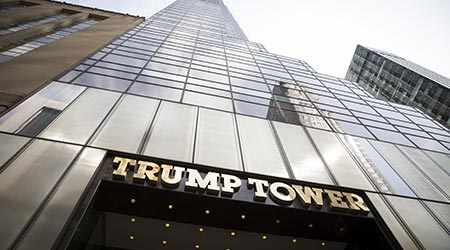
Organizations Tackling Record-Breaking Greenhouse Gas Emissions
December 19, 2018
Greenhouse gas emissions are projected to reach an all-time high in 2018, and several organizations are moving forward with bold steps to reduce their contributions to the problem.
Carbon dioxide emissions are expected to close out 2018 at 37.1 billion tons, 2.7 percent higher than 2017, according to the Global Carbon Project. Emissions rose 1.6 percent in 2017 after remaining steady between 2014 and 2016, according to The Washington Post.
Against this backdrop, the New York City Council recently introduced legislation that would require building owners to make energy-efficiency upgrades to their facilities. Introduced as a series of parallel bills, the proposal aims for a 40 percent cut in greenhouse gas emissions from buildings with more than 25,000 square feet by 2030, with intermediary efficiency reductions mandated for 2022 and 2024. Emissions reductions targets vary by a facility’s occupancy group categorization. Bill 1251, 1252, and 1253 also would establish an Office of Building Energy Performance and a commercial property assessed clean energy (C-PACE) program to help fund the necessary energy efficiency retrofits.
While groups such as the National Resources Defense Council (NRDC) laud the proposed legislation, there is criticism of its current incarnation, with NRDC, building workers union 32BJ SEIU, and the Real Estate Board of New York providing joint testimony at the hearing. The NRDC disagrees with the exemption of rent-regulated units from the limits, as these types of multifamily buildings often need energy efficiency improvements the most. Representatives of the Real Estate Board of New York said it would be impossible to meet the emissions reductions targets in the proposed window, according to Crain’s. The group estimates that to meet the 2022 targets, owners would need to complete more than 450 million square feet of retrofits.
Another organization is tackling carbon dioxide emissions at the source. Excel Energy is the first major U.S. utility to pledge to fully phase out carbon-dioxide emissions by 2050. While the company is not walking away from fossil fuels cold turkey, its goal is to reduce its carbon emissions by 80 percent from 2005 levels by 2030 by deploying renewable energy, carbon capture, and technologies yet to be commercially available. To date, the company has reduced its carbon emissions by 35 percent since 2005 and already has the second highest wind-power capacity among U.S. utilities, according to Bloomberg.
Naomi Millán is senior editor, Building Operating Management.
Next
Read next on FacilitiesNet












